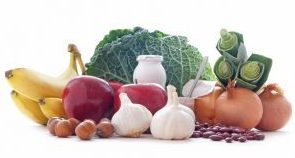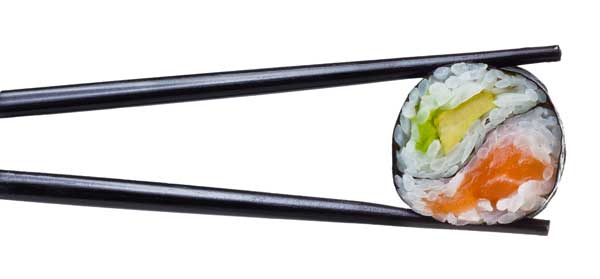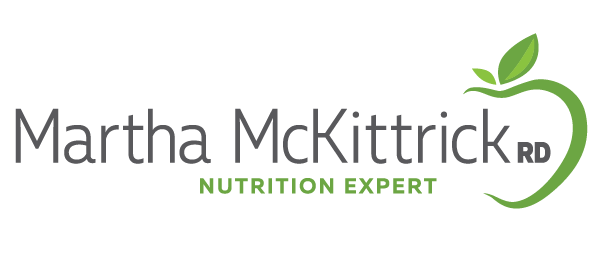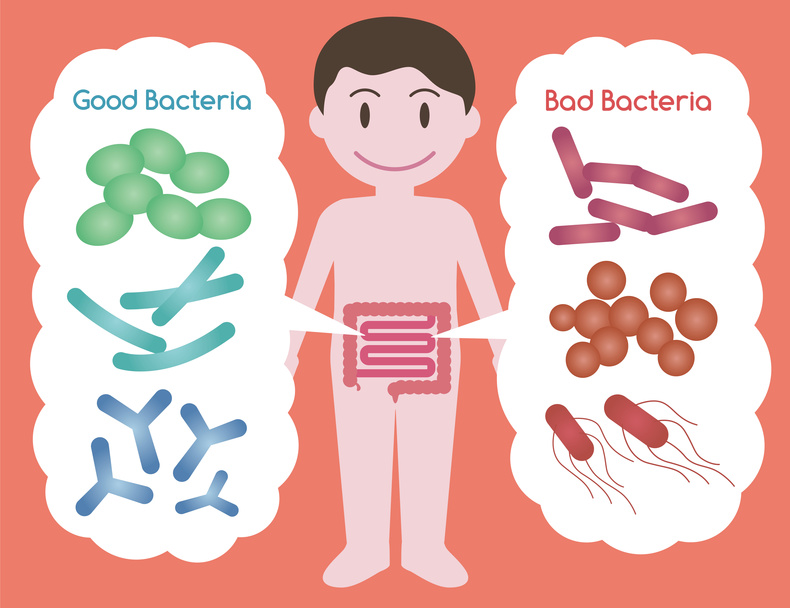Why You Need Prebiotics for Health and What Foods Contain Them

I’m writing this blog post because most of my clients eat on the run and/or may be following a lower carb diet. Most of our diets are lacking in this “overlooked” nutrient that is essential for good health! This blog post is lengthy and a little “sciencey” … but try to read it!
You’re probably familiar with the health benefits of probiotics and may even be taking a probiotic supplement. Research has shown that probiotics (“good bacteria”) play a major role in our health – including improved immunity, digestive health, mental health, weight control, decreased risk of diabetes, heart disease, and more. But I bet you haven’t heard much about prebiotics. These non-digestible carbohydrates are essential to help “feed” your good bacteria. And most of don’t consume nearly enough of them … especially if you are on a lower carb diet or eat most of your meals on the run.
Think about what happens if you don’t water your garden. It dies. The same goes for probiotics. They are living organisms in your gut that need food in order to survive. Prebiotics are natural, non-digestible ingredients that stimulate the growth and/or activity of healthy bacteria in the colon. Envision them as fertilizers for watering the “garden” of good bacteria inside your body. If you don’t consume adequate prebiotics, the probiotics can’t function optimally.
In addition, studies have demonstrated that prebiotics on their own play important role in weight management, and lowering blood sugar, insulin levels and cholesterol. Read on to learn more about prebiotics, where to find them and the health benefits.
 Quick low down on gut health & microbiome
Quick low down on gut health & microbiome
We all have about 5 pounds of bacteria living in and on us; the majority is in our intestinal tract. Our microbiome (gut bacteria) regulates our overall health, immune system, metabolism, energy, body weight, mood, food choices, nervous system, heart health, risk of diabetes, metabolic syndrome, osteoporosis, mental health, allergies, etc. A healthy gut is one that contains a good balance of bacteria as well as diversity. It’s believed that modern lifestyles and the Western diet (high in fat, sugar and processed foods and low in fiber) – play a role in the reduction of good bacteria and overall diversity. Foods high in fiber, especially certain types of fiber and resistant starches called prebiotics, play a major role in keeping our gut bacteria in balance.
Fiber and prebiotics
Most of think of fiber as roughage that helps keep you regular! Have a bowl of twig cereal and you’re good to go. Not quite so simple! While fiber may help prevent constipation, there are many different types of fiber that have a wide variety of functions in the body. Fiber can be classified as insoluble, soluble and resistant starch. It’s broken down further into dietary, viscous and fermentable fiber. I don’t want to get into science class here, so for those who want to learn more, check out my references below. The article focuses mainly on prebiotics fibers because of the key role they play in overall health. Keep in mind that while all fiber has health benefits, not all fiber is considered a prebiotic.
Prebiotics are a type of non-digestible fiber compound. Because they can’t be digested, they pass through the upper part of the gastrointestinal tract and remain undigested. Once they pass through the small intestine, they reach the colon, where they’re fermented by the gut bacteria. Here’s where the good things happen! The gut bacteria ferments soluble fiber, releasing metabolites such as SCFA including butyrate, acetate and propionate acids. These short chain fatty acids provide metabolic benefits discussed below. Prebiotic fibers provide additional benefits by maintaining balance and diversity of intestinal bacteria, especially increasing the presence of “good bacteria” called lactobacilli and bifidobacteria.
In order to classify a food ingredient as a prebiotic, it requires scientific demonstration that the ingredient:
-Resists gastric acidity, hydrolysis by mammalian enzymes, and absorption in the upper gastrointestinal tract
-Is fermented by the intestinal microflora
-Selectively stimulates the growth and/or activity of intestinal bacteria potentially associated with health and well-being.
Types of Prebiotics: (excerpt from Travelling Dietitian blog)
Within both prebiotic fibres and resistant starches, there are sub-divisions;
The prebiotic fibre subdivisions include (but are not limited to):
-Oligosaccharides i.e. fructo-oligosaccharides, iso-molto- oligosaccharides, xylo-oligosacharides and galacto-oligosacharides
-Inulin
-Gums and mucilages i.e guar gum, acacia gum, psyllium
-Fruit and vegetable fibres i.e lupin kernel fibre and legume fibre
-Other non starch polysaccharides i.e pectin (in apples), beta-glucan (in oats and barley) and hemicellulose (glucomannan inside konjac root)
Prebiotics effects on health
I’ve watched several webinars in the past few weeks on the microbiome and prebiotics and you can be sure I’ll be encouraging my patients to consume more of them! Here are some health benefits:
- Aid in weight loss by reduced energy intake and appetite, decreasing BMI and body fat%
- Play a role in bone health by enhancing calcium and other mineral absorption
- Reduces fasting and postprandial glucos
- Stimulation of neurochemical-producing bacteria in the gut
- Reduces risk of heart disease by decreasing cholesterol and inflammation
- Reduces inflammation. Inflammation is linked to many diseases
- Improves gut health and digestion. Research has shown that higher intakes of prebiotic foods can increase numerous probiotic microorganisms, including Lactobacillus rhamnosus GG, L. reuteri, bifidobacteria, and certain strains of L. casei or the L. acidophilus-group. Prebiotics, along with probiotics, can help treat many digestive problems, including: diarrhea (especially after taking antibiotics), certain intestinal infections and chronic disorders like Crohn’s disease and ulcerative colitis, symptoms of irritable bowel syndrome (IBS) (but some people with IBS can get worsened
NOTE: Many people experience gas and bloating when increasing intake of prebiotics – especially if you have a pre-existing gastrointestinal problem. So ease into them slowly. Some people with gastro-intestinal problems should not increase this type of fiber, so check with your doctor! Lastly, some people who have IBS are intolerant to these fibers due to worsened gas and bloating. But most of us should be able to tolerate small amounts and increase as tolerated.
Sources of prebiotics
You can get prebiotics from a variety of foods. They are also added to many foods like energy bars, and other high fiber products. You can also get prebiotic supplements.
Prebiotic rich foods (when possible, eat these foods raw to preserve more of the fiber content)
-Jerusalem artichokes
-Onions, chicory, garlic, leeks
-Fruit such as under-ripe bananas, cherries, berries, apples
-Cruciferous vegetables including broccoli, cauliflower, collards, bok choy, Brussels sprouts, mustard greens and kale
-Other vegetables including mushrooms, asparagus, eggplant, radishes
-Soybeans
-Burdock root
-Barley
-Konjac root or glucomannan
-Oats
-Jicama
-Yakon root
-Sea vegetables like seaweed, spirulina and other marine algae
-Chinese chives
-Peas
-Legumes
-Green tea
-Cocoa
-Lupin beans and lupin flour
-Green banana flour (resistant starch)
-Potato starch (resistant starch) and cooked cooled potatoe
Prebiotic products (these may be added to food products. Read labels)
-Acacia powder and gums – one of the richest sources of prebiotics in a natural food supplement powder
-Chicory root fiber found in many high fiber or low sugar products (e.g no added sugar ice-creams, or energy bars)
-Isomolto-oligosacharides (found inside food products)
-Inulin (added to many high fiber food products like energy bars)
-Prebiotin prebiotic fiber supplement (100% natural Oligofructose Enriched Inulin) 1 scoop = 4 gm
-Fructooligosaccharides
-Galactooligosaccharides
-Maltodextrin
-Wheat dextrin
Bottom line:
Our diet plays a major role in the types, amount and diversity of gut bacteria we have. The standard American diet is too low in overall fiber, including prebiotics. Prebiotics play a critical role in keeping the probiotics we consume or already have in our bodies alive, Prebiotics work in combination with probiotics to Prebiotics work together with probiotics to maintain the balance and diversity of intestional bactria especially preserving the “good bacteria”.
So do your best to increase your intake of prebiotics. But remember to go slow as increasing fiber intake, especially fermentable fiber found in prebiotics, can cause gas and bloating. If you have any gastrointestinal condition, please check with your doctor before increasing your intake of fiber!
Stay tuned for a blog post on probiotic rich foods
References:
1. The Mighty Microbiome: What do we know and what do we need to learn? By Hannah Holscher, PhD, RD and Megan Meyer, PhD Academy of Nutrition & Dietetics Webinar
2. http://www.nutritionaltherapyconference.com/wp-content/uploads/2015/09/MIcrobiome-FINAL.pdf
3. Traveling Dietitian has several excellent blog posts on prebiotics:
-Why prebiotics are the most important nutrient to boost your mood and prevent depression
-Best prebiotic food list
5. High-Fiber Foods and Digestive Health: More or Less
6. Dr. Axe: Prebiotics
7. Healthline.com: 19 best probiotic foods
RELATED POSTS
MEET MARTHA
I especially love problem-solving, whether it’s helping women defeat issues plaguing them for years, helping a busy executive find practical ways to get heart healthy, or providing tips to help you reverse diabetes. That’s why I’m on a constant quest to expand my knowledge by staying on top of the latest research.
3 Comments
Leave a Comment

20 Ways To Eat Out 550 Calories or Less!
No time to cook? We’ve got you covered. Here are 20 healthy meals from a variety of cuisines that won’t pack on the pounds. Most of them also have less than 30 grams of carbs.
Subscribe to my newsletter and get this free download.





[…] sea vegetables like seaweed, spirulina and other marine algae. See my previous post on prebiotics to get the full list. Also choose probiotic rich fermented veggies as well as […]
Prebiotics supply the Probiotics. You shared such valuable information regarding Prebiotics, thank you for this valuable information.
I like this article. Reading this again is worth my time. Prebiotics really helps us to have a healthy body.